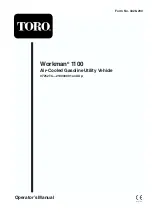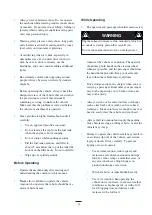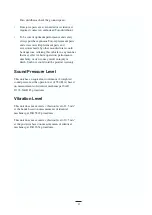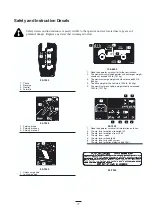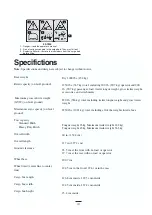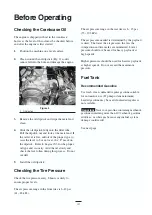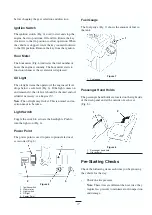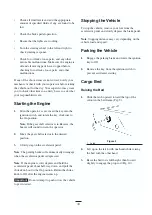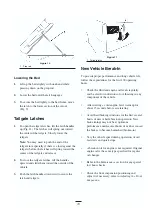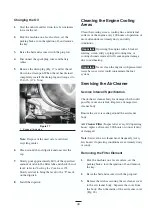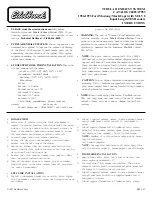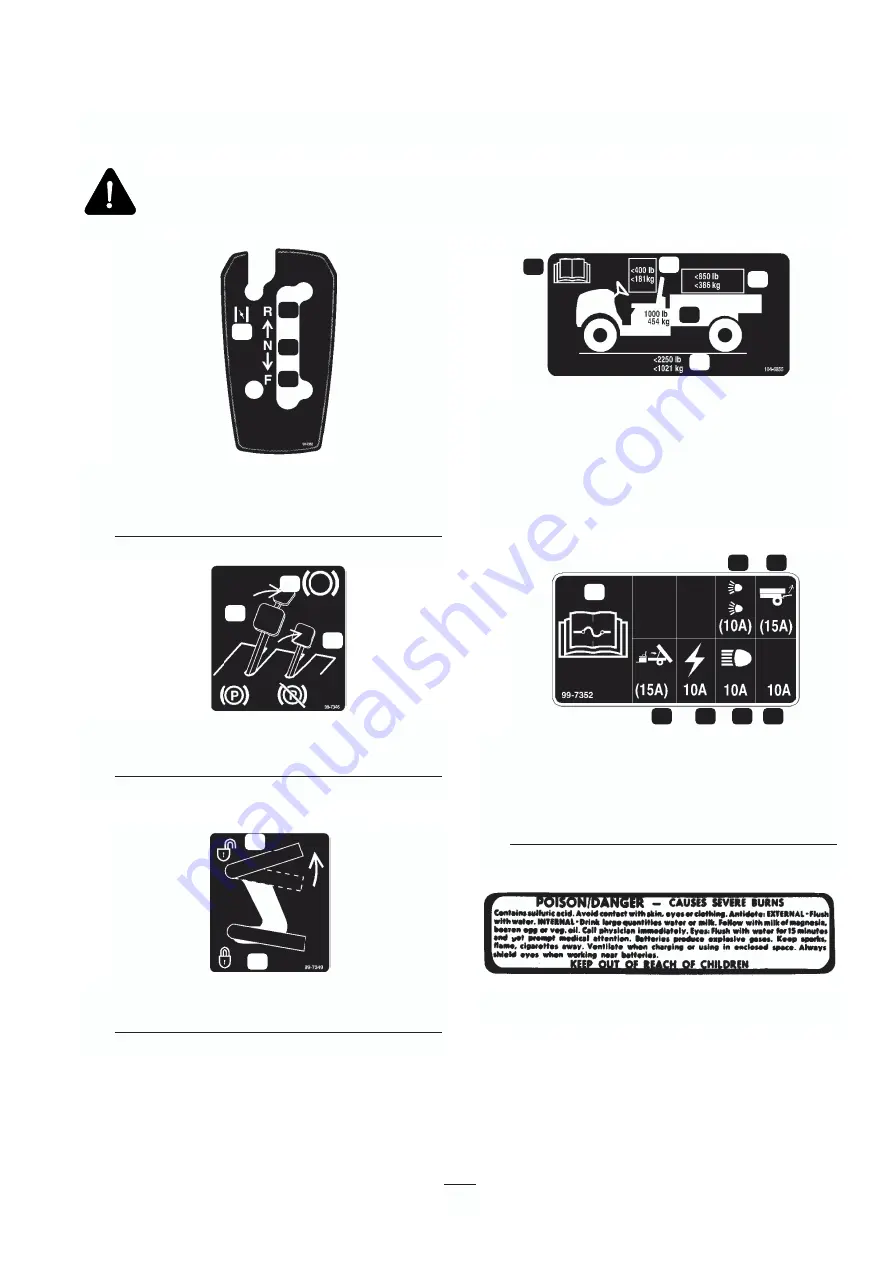
Safety and Instruction Decals
11
Safety decals and instructions are easily visible to the operator and are located near any area of
potential danger. Replace any decal that is damaged or lost.
99-7952
1. Choke
2. Reverse
3. Neutral
4. Forward
99-7346
1
Parking brake
2. Parking brake on
3. Parking brake off
99-7349
1. Unlock cargo bed
2. Lock cargo bed
104-6855
1. Read the operator’s manual for further instructions.
2. The maximum combined operator and passenger weight
should not exceed 400 lb. (181 kg).
3. The maximum cargo weight should not exceed 850 lb.
(386 kg).
4. The base weight of the vehicle is 1000 lb. (454 kg).
5. The maximum gross vehicle weight should not exceed
2250 lb. (1021 kg).
1
4
1
1
2
2
2
3
5
3
99-7352
1. Read the operator’s manual for information on fuses.
2. 10-amp. fuse for optional road light kit
3. 15-amp. fuse for optional rear lift kit
4. 10-amp.
fuse—open
5. 10-amp. fuse for headlights
6. 10-amp. fuse for ignition system
7. 15-amp. fuse for optional electric bed lift kit
2
7
6
5
4
3
1
26-7390
4
2
3
1
Summary of Contents for Workman 1100
Page 36: ......

